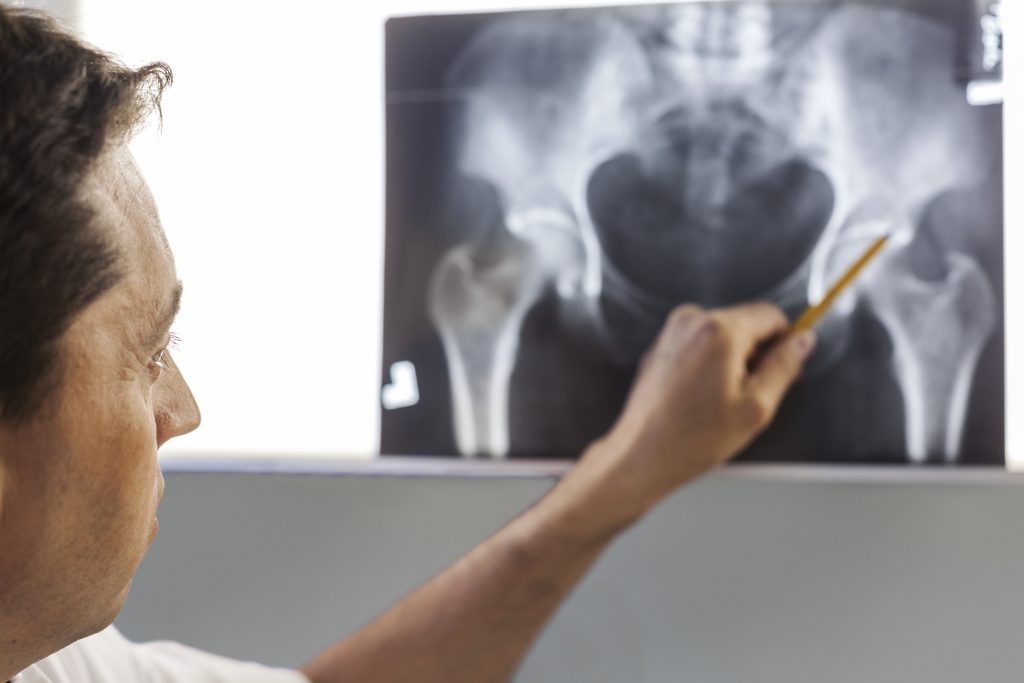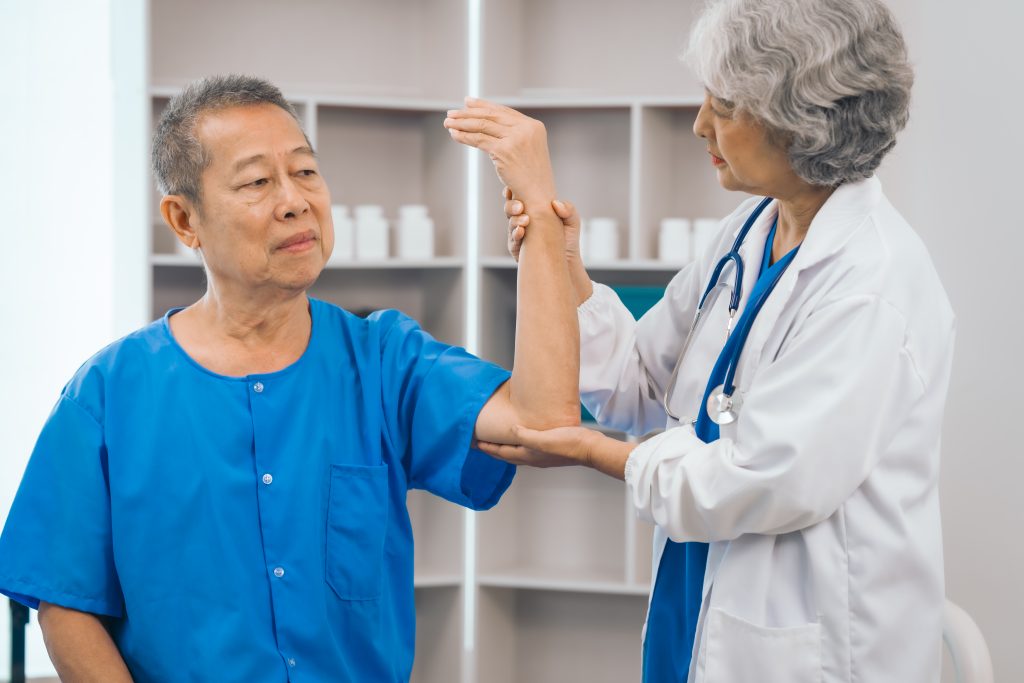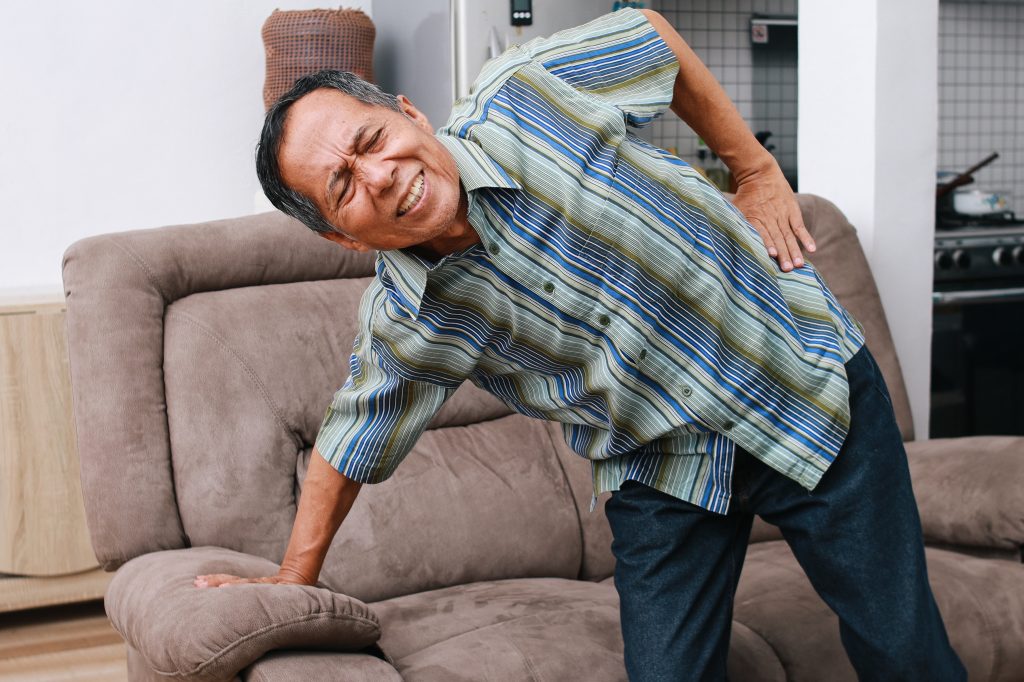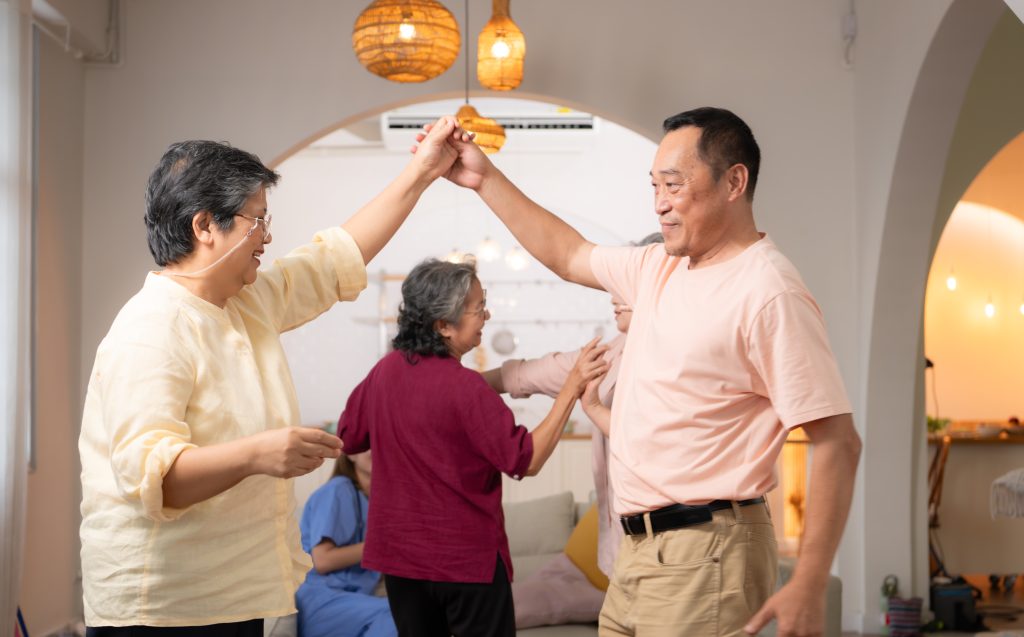
Osteoporosis in Singapore: How to Prevent Hip Fractures and Reduce Medical Costs
14 Oct 2025
What is osteoporosis, and why is it dangerous?

Osteoporosis is a progressive condition where bones lose density and strength over time, becoming porous, brittle, and more prone to fractures. Unlike injuries caused by major accidents, fractures associated with osteoporosis can occur during everyday activities, such as lifting a heavy bag, missing a step, or even coughing forcefully.
The danger lies in its silent progression. Most people do not realise their bones are weakening until a fracture occurs, which is why osteoporosis is often referred to as a “silent disease.”
Who is at risk of osteoporosis?
Osteoporosis is a common disease that occurs with higher incidence in the following individuals:
- Women after menopause: Post-menopausal women experience rapid oestrogen loss, which accelerates bone breakdown.
- Older men (65 and above): Testosterone decline in older men contributes to bone weakness.
- Younger adults: A poor diet, low calcium and vitamin D intake, smoking, heavy alcohol use, or a sedentary lifestyle can all increase the risk of osteoporosis.
- Family history and ethnicity: Having parents with a history of frequent fractures increases risk. Asians, including Singaporeans, may be more vulnerable due to smaller bone structures.
- Certain medical conditions and medications: Long-term steroid use, thyroid disease, or rheumatoid arthritis can trigger early bone loss.
If you have any of the above risk factors, consult your doctor about maintaining good bone health as early as possible.
Why is osteoporosis dangerous?

Osteoporosis weakens the structural “scaffolding” of the body, leading to fractures in key areas. This occurs most notably as:
- Hip fractures: Hip fractures are the most serious type of fracture. They often require surgery and hospitalisation, with long-term loss of mobility.
- Spinal (vertebral) fractures: Spinal fractures can cause chronic back pain, height loss, and stooped posture.
- Wrist fractures: Wrist fractures are common in early stages of osteoporosis, which can reduce independence in daily activities.
Once a person suffers one fracture, the risk of future fractures increases significantly. This cascade effect makes osteoporosis not just a medical condition but also a long-term threat to independence, quality of life, and financial stability.
Why hip fractures are so serious
Hip fractures are among the most severe complications of osteoporosis. As previously mentioned, they almost always require surgery, followed by weeks to months of rehabilitation. Many patients, especially older adults, never fully regain their independence. Some are left with permanent disability, while others may face life-threatening complications such as infections or blood clots.
Beyond disability, hip fractures are also linked to a higher risk of death. Recent studies worldwide, including some conducted in Singapore, have found that one-year mortality after a hip fracture can range from around 9% in surgically treated patients to more than 30% in those managed without surgery. Longer-term studies show that mortality risk continues to rise, with up to 60% of patients passing away within 10 years of the fracture. This illustrates the seriousness of hip fractures, not only in terms of recovery but also in terms of long-term survival.
Additionally, the impact of a hip fracture extends beyond the patient. Families often need to step in to take on caregiving duties, which can disrupt their work, daily routines, and other responsibilities. The emotional stress of caregiving, combined with the financial burden of medical bills and rehabilitation, can be overwhelming.
Without adequate health insurance, these associated costs may fall directly on families. This is why prevention, through bone health screenings, lifestyle modifications, and early management, is far more effective than treating the consequences after a fracture has occurred. Basically reiterating the age-old saying that “prevention is better than cure.”
How to prevent osteoporosis: Diet and lifestyle tips

Our bones, like all other parts of our body, are living tissue. They break down and rebuild constantly, a process known as remodelling. When we are young, bone formation (a process known as osteogenesis) occurs quicker than bone breakdown. This allows us to build more bone, increasing our bone mass. However, as we age, bone breakdown occurs more quickly than bone formation.
This has led doctors and researchers to understand that osteoporosis prevention should begin early, even in the 20s and 30s, because building strong bones when young creates a “bone bank” that helps protect you later in life.
Here are some key strategies to maintain healthy bones:
- A bone-healthy diet rich in calcium and vitamin D is one of the best ways to maintain bone strength. Foods such as dairy products, leafy greens, soy products, and fortified foods are excellent sources of calcium. Vitamin D can be obtained from eggs, fatty fish, or safe exposure to sunlight.
- Weight-bearing exercises, such as walking, jogging, dancing, or strength training, help stimulate bone growth and maintain bone density. Balance and flexibility exercises, such as yoga or tai chi, can also reduce fall risks.
- Avoid smoking and excessive alcohol consumption, as both weaken bone strength and accelerate bone loss.
- Maintain a healthy body weight. Being underweight increases fracture risks, while obesity can increase the likelihood of falls and joint stress.
- Get regular bone health screenings, such as a DEXA scan (gold standard for bone density scans).
Quick Tip for Singaporeans: Incorporate calcium-rich local foods such as tau kwa (firm tofu), ikan bilis, and leafy vegetables like chye sim. If you don’t get much sun exposure due to office hours, consider asking your doctor if you need a vitamin D supplement.
Insurance options in Singapore for osteoporosis and hip fractures
Medical costs from osteoporosis-related fractures can be overwhelming, especially if surgery or long-term rehabilitation is required. Depending on the severity of the fracture, expenses may include surgery, hospital stays, rehabilitation, and even home modifications to support mobility. Several insurance options in Singapore may help ease this financial burden:
1. Integrated Shield Plan (Hospitalisation Insurance)
- Covers major inpatient costs such as surgery, hospital room charges, implants, and rehabilitation linked to hospitalisation.
- Your MediShield Life will pay part of the bill, but an Integrated Shield Plan offers higher coverage, especially if you are admitted to a private hospital or a higher-class ward.
- Remember to check your coverage and see if your plan includes coverage for rehabilitation or physiotherapy. Some policies limit post-hospitalisation benefits to 90–180 days.
2. Personal Accident Plan
- A Personal Accident Plan typically covers fractures and falls resulting from accidental injuries, including outpatient treatment, A&E or UCC visits, and physiotherapy.
- However, most exclude fractures caused by age-related osteoporosis, since these are classified as medical conditions rather than accidents.
- They are best suited for younger adults or individuals at higher risk of day-to-day accidents.
3. Critical Illness Plan
- Critical Illness Plans provide a lump-sum payout if you are diagnosed with one of the listed conditions.
- Osteoporosis itself is usually not covered. However, some policies may include severe complications, such as “major osteoporotic fractures” leading to permanent disability.
- For example:
- AIA Glow of Life – includes osteoporosis as one of the women-focused CI conditions.
- AIA Absolute Critical Cover – lists osteoporosis under its “special conditions.”
- If triggered, the payout from your Critical Illness Plan can help cover lost income, lifestyle adjustments, or long-term care needs.
4. CareShield Life
- CareShield Life provides monthly payouts if you become severely disabled (e.g., unable to perform at least three out of six activities of daily living, such as walking, bathing, or feeding).
- This is especially relevant if a hip fracture results in lasting disability and loss of mobility.
Table: Health insurance options for osteoporosis in Singapore
Insurance type | What it covers | Limitations | Best for |
|---|---|---|---|
Integrated Shield Plan | Covers hospital stays, surgery, rehab linked to hospitalisation | Does not cover long-term caregiving needs | Big medical bills from fracture treatment |
Personal Accident Plan | Covers fractures/falls due to accidents, outpatient visits, A&E/UCC, physiotherapy | Usually excludes age-related fractures from osteoporosis | Day-to-day accidents, minor injuries |
Critical Illness Plan | Lump-sum payout if osteoporosis leads to severe complications (depending on policy) | Only certain severe conditions are covered | Income replacement if illness/fracture disables work |
CareShield Life | Monthly payouts if disability results in inability to perform daily activities | Kicks in only when disability is severe (e.g., unable to walk or need caregiving) | Long-term caregiving, lifestyle adjustments after severe fracture |
When should you see a doctor for bone health?

Osteoporosis develops silently, with symptoms only becoming prominent in the later stages. In order to safeguard yourself from osteoporosis, speak to your GP, who may refer you to the relevant specialist for further testing.
The gold standard for bone health screening and detecting osteoporosis is the bone density DEXA scan. It can detect low bone density before a fracture occurs, allowing you to take preventive steps, such as making dietary changes, taking supplements, exercising, or undergoing medical treatment. Early detection is key because once a fracture happens, recovery is often difficult and costly.
Tip for Singaporeans: Many health screening packages now include bone density checks. While these are usually out-of-pocket, some corporate insurance plans cover specialist consultations and tests if ordered by a doctor. Always review your coverage to understand what is included.
Take Charge of Your Bone Health Early
Osteoporosis may feel like a condition that only affects the elderly, but prevention should begin early. Building strong bones in your 20s and 30s lays the foundation for healthy ageing. Don’t wait until after a fracture to take action. Simple lifestyle changes, such as eating a balanced diet, exercising regularly, and undergoing regular bone density checks, can make a significant difference. Pair prevention with proper insurance planning to ensure you’re financially protected in case of unexpected fractures.
Review your coverage now to see what protection gaps you may have with our Coverage Checker.




